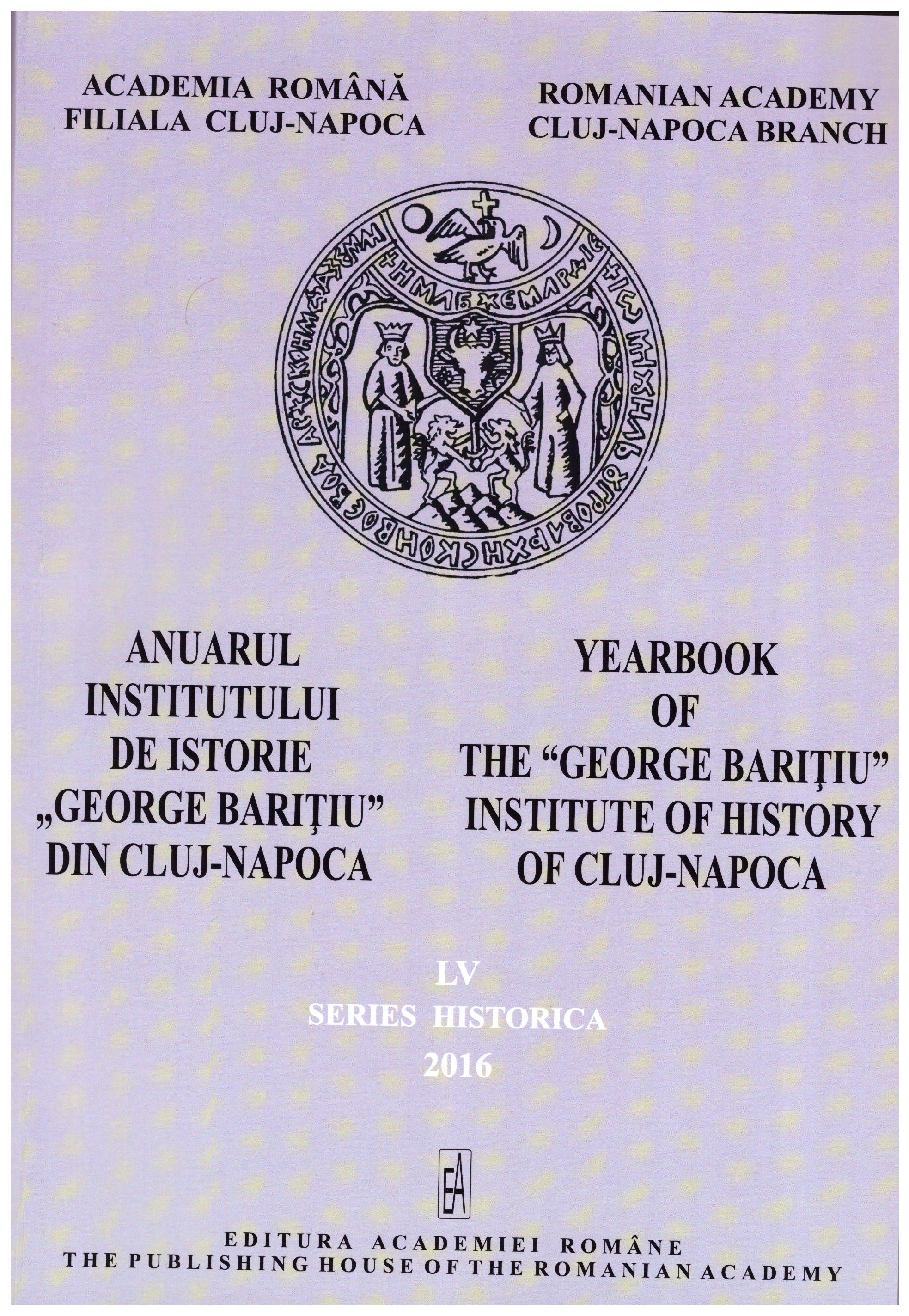Protopopiatul Greco-catolic Vişeu: organizare, funcţionare, evoluţie istorică (1850-1905)
The Greek Catholic Archpriestship Vișeu: Organization, Activity, Historical Evolution (1850-1905)
Author(s): Dan Constantin IftimiSubject(s): History, Modern Age, 19th Century
Published by: Editura Academiei Române
Keywords: archpriest; Greek-Catholic; competences and achievements
Summary/Abstract: The history of the Romanian people is the history of a people that permanently fought with the empires from the neighbourhood, in order to keep and protect the ethnic being, the language, the religion. This fight had an impact over the Romanian people’s conceptions and way of life and in the modern epoch of the Romanians’ history, it passed into a new stage, a superior one, the moment the new economic, social and political conditions appeared, when the Romanian nation strongly distinguished itself, when the Romanian modern state was set up, when the European peoples struggled for national freedom from under the Habsburgic, Ottoman and Czarist empire. Undoubtedly, the period from the second half of the XIX-th century and the beginning of the XX-th, up to the First World War, was a very important one in the national history of the Romanians. Within this period the Romanian society from Transylvania, influenced by the general European evolution knew many changes at all levels. The paper approaches, on the one hand, the origin and evolution of the Archpriestship, and on the other hand, it brings to the knowledge of the reader, the archpriests from Vişeu. In what the archpriest is concerned, it is shown his training, the Church always paying attention to the priests’ training, their role and tasks, the archpriest being appointed to execute the bishop’s orders and to make known to him the clergy’s grievances and petitions. Considering the archpriest’s function of school inspector too, his didactic tasks are also shown. The church life knew important evolutions and in spite of the secularization current, the Church was an institution of extreme importance for the Romanian community till the First World War. On the one side the archpriest’s and Archdiocese authority, had an important role as indicator agent, and on the other side, the parishioners contributed to the keeping of the ethnic being, of the confessional and national identity. In the second half of the XIX-th century, the Church remains a strong support for the nation, representing an ethnic and national identification factor. When the situation asked for, the Church knew how to gather the believers and how to train them in order to preserve the Christian spirituality and to keep the national rights. The Church, through its servants, understood that it was necessary to share the tasks between the mind lightning and the souls’ purification. It is not only an old, important institution that throughout the times had to face adversities, never being defeated, but it is more than that, a way of life and living, a belief, a bridge for reconciliation between all those that are transitory and perpetual. This is also the reason why people do not perceive it only as servants, but mainly as living persons in church or the church itself .
Journal: Anuarul Institutului de Istorie »George Bariţiu« - Series HISTORICA
- Issue Year: LV/2016
- Issue No: 55
- Page Range: 97-117
- Page Count: 21
- Language: Romanian

